Whale hello there!
One of the largest and longest-known animal migrations on earth is that of the ocean’s majestic giants, Whales. There are over 92 species of whales and dolphins found in our world’s oceans. Travelling over 3,000 miles from their feeding grounds in the cold waters of Antarctica to visit the warm, vibrant waters of the Great Barrier Reef, the Humpback Whale is the most iconic of Whales found along the East Australian coastline between June and October. 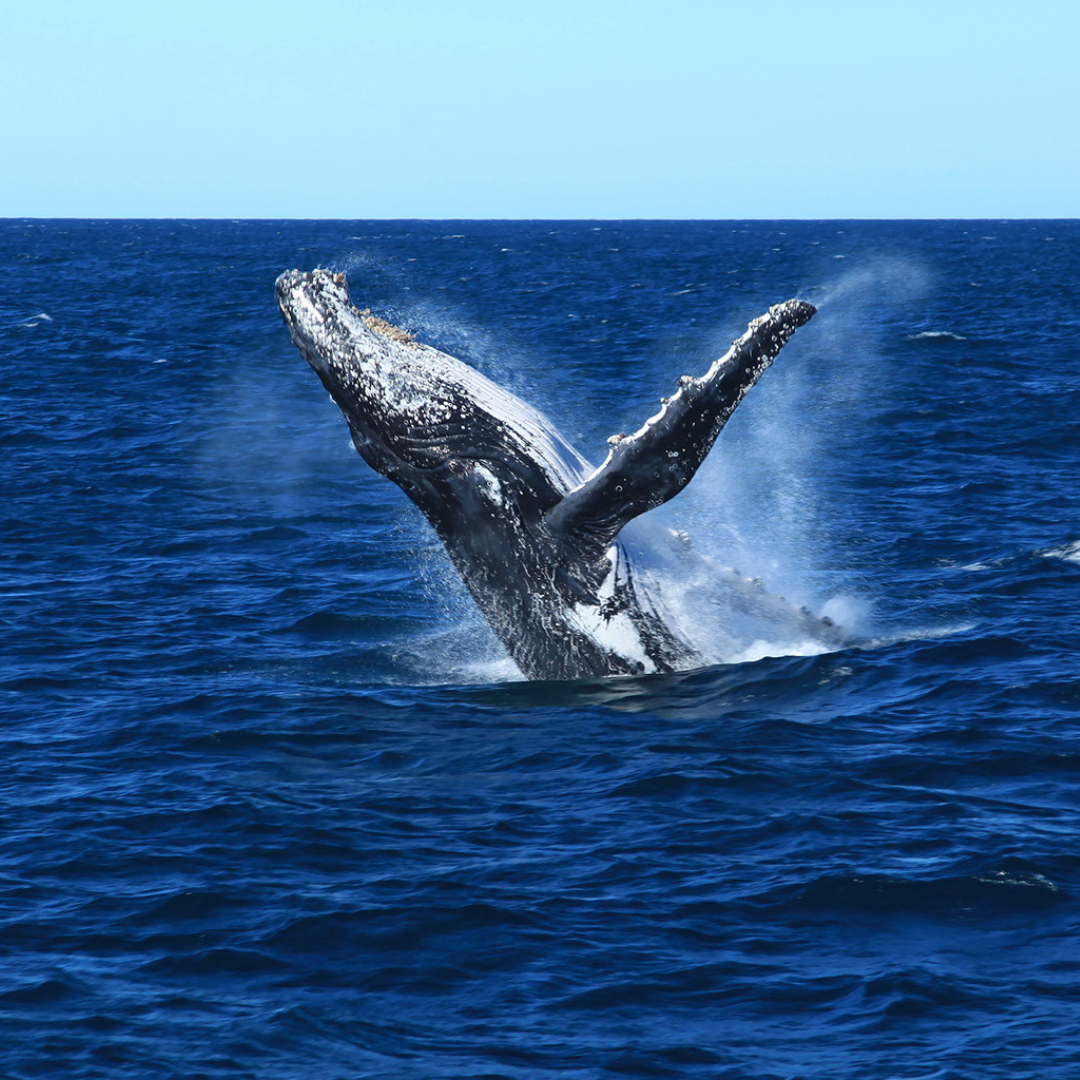
Humpback Whales appear in all the world’s oceans, separated into Southern and Northern Hemisphere populations. The Southern population is further divided into seven groups, two of which migrate at a cruising speed of approximately 8 km/hr, reaching 32 km/hr in short bursts along Australia’s East and West coasts each year.
Let’s delve into the Heart of the Great Barrier Reef, here we find ourselves surrounded by 74 island wonders and vibrant coastal communities, The Whitsundays. Amongst these shallow tropical waters, new life begins. Female Humpback Whales arrive here each year to either breed or give birth. With a gestational period of 11-12 months, female Humpbacks give birth once every 2-3 years to a single live calf, fluke (tail) first.
If you’re visiting The Whitsundays during whale season, the best way for you to get up close and personal with a whale is by boat, of course! While there is no guarantee of spotting a whale every time you go out on the water, Winter and Spring always offer the best chances. Overnight sailing, Bareboating, and many other tours depart from Airlie Beach and the surrounding islands daily. Be sure to keep your eyes peeled around the clock, especially when on tours exploring around The Whitsunday Islands… you might just get a whale-watching show for free. Of course, if the mainland is more your thing – it doesn’t matter whether you’re a mountaineering hiker or a balcony-gazer, it’s a regular sight to see whales dancing in the distance.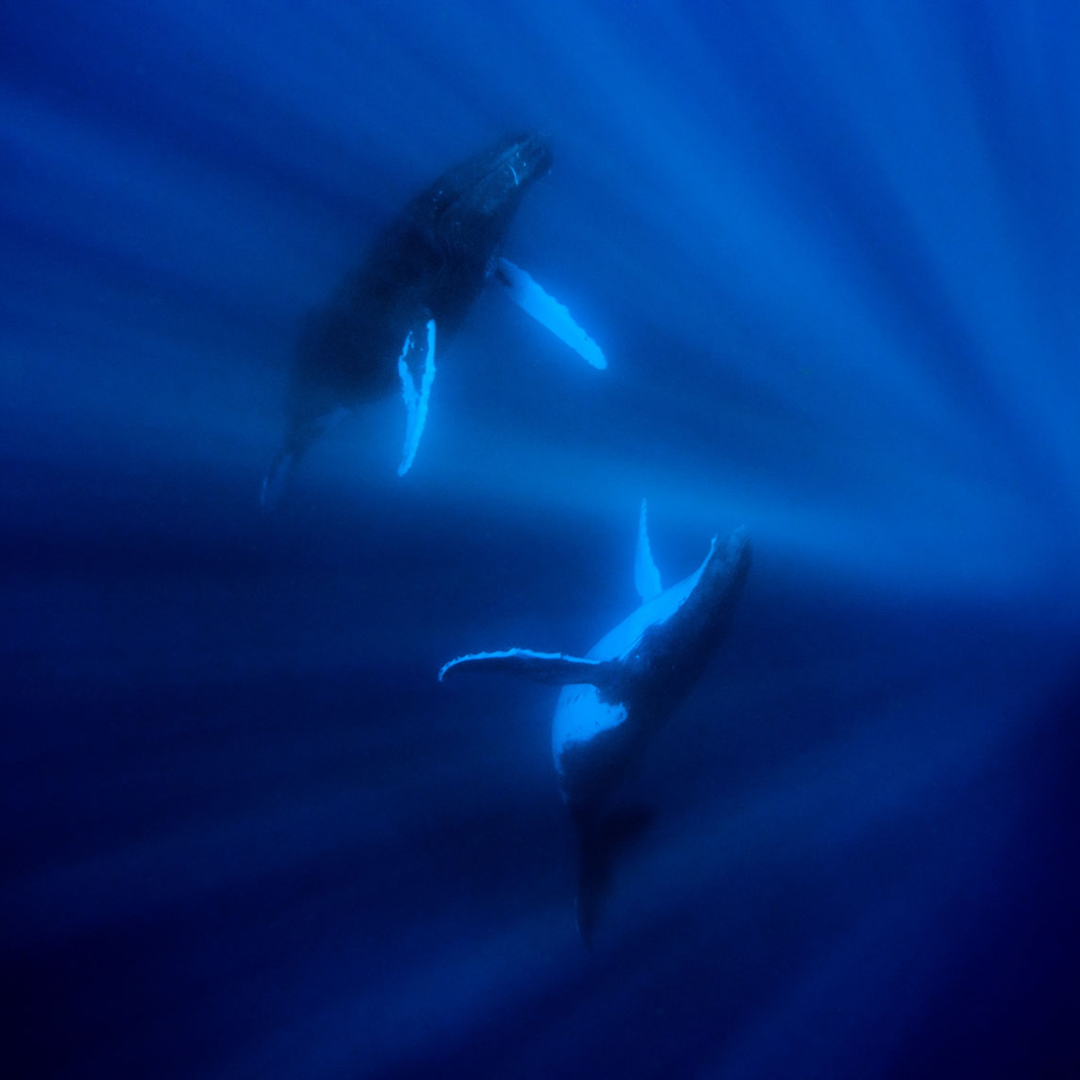
The elusive female Dwarf Minke Whale also passes through the protected waters of the Whitsunday Islands from June until October. Only discovered in the mid-1980s the Dwarf Minke Whale’s migration through the Great Barrier Reef is astonishingly the only known predictable aggregation in the world. Spending most of their adult lives pregnant, female Dwarf Minke Whales give birth to a single calf each year. With a gestational period of 10 months, the young are born the size of a baby giraffe.
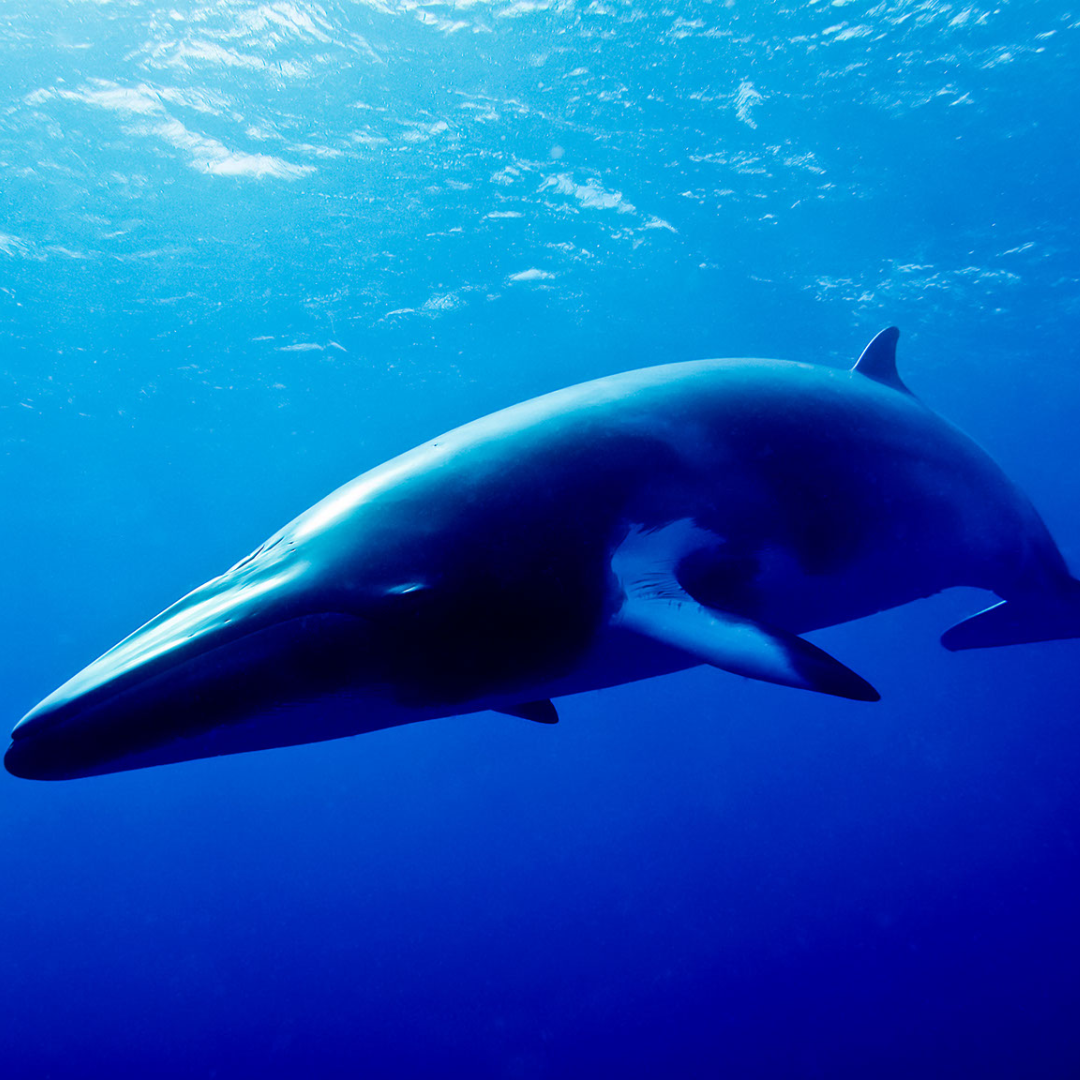 During The Whitsundays’ winter months (June – October), whilst you are in the water snorkelling or Scuba Diving, keep an ear out! Male Humpback Whales are famous for their songs, which can be heard up to 30 km away! These complex collaborations of moans, howls and cries can last for hours, and each year a new verse is added to the song. The song is the same for the entire group. However, different populations have different songs; their songs help to identify different whale populations globally.
During The Whitsundays’ winter months (June – October), whilst you are in the water snorkelling or Scuba Diving, keep an ear out! Male Humpback Whales are famous for their songs, which can be heard up to 30 km away! These complex collaborations of moans, howls and cries can last for hours, and each year a new verse is added to the song. The song is the same for the entire group. However, different populations have different songs; their songs help to identify different whale populations globally.
Humpback Whales are also famous for their entertaining acrobatic displays. As elusive as these ocean giants can be underwater, the easiest way to spot a Humpback Whale is when they launch their entire bodies out of the water, called breaching. There are many different surface behaviours of the Humpback Whale, and each has a specific meaning:
Full Body Breach: Mothers will teach their young how to launch their bodies out of the water either just for fun or to help relieve themselves of nasty parasites.
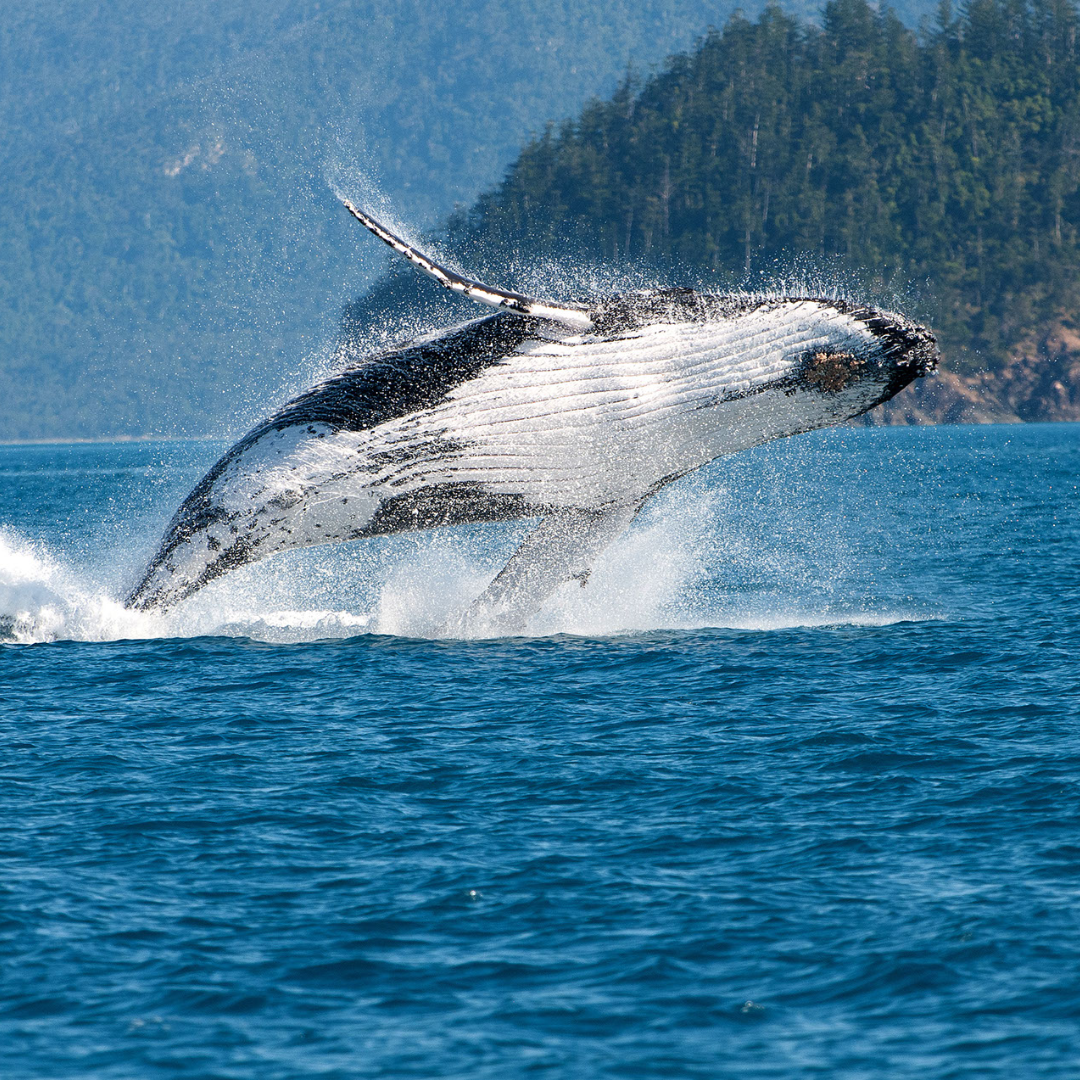
Blow: Whales are mammals, so they breathe air like humans; a major difference is that they breathe voluntarily, which means they must think about doing it. Typically, whilst travelling, a whale will take a breath every 10-15 minutes. Humpback Whales’ lungs are around the same size as a small car! The force of the air coming out of their blowholes can be seen for miles as a cloud of mist above the surface.
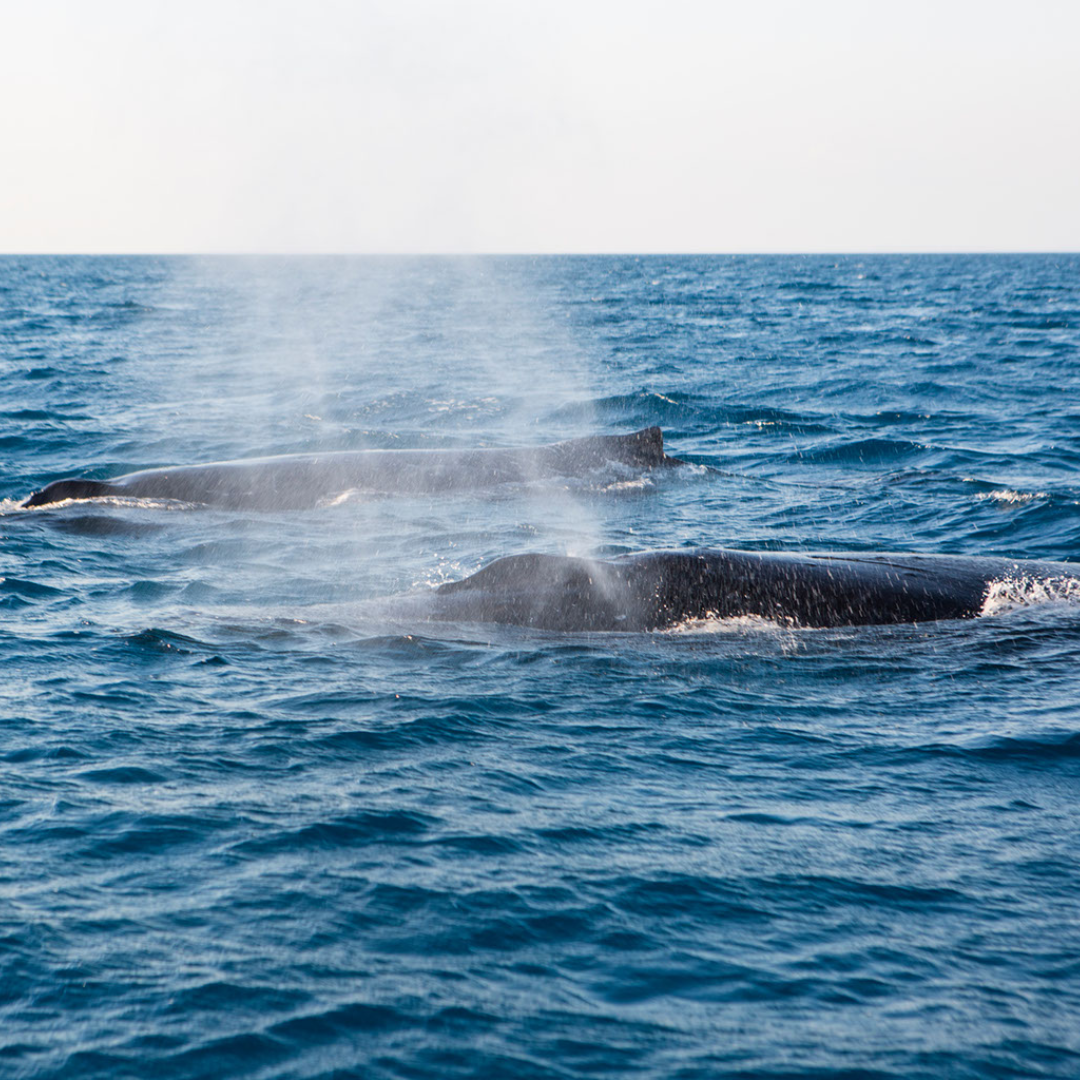
Tail Slap: Positioning themselves vertically in the water and slapping their tails on the surface, Humpback whales will perform this repeatedly. The main reason for this behaviour is a warning to predators, a defensive action.
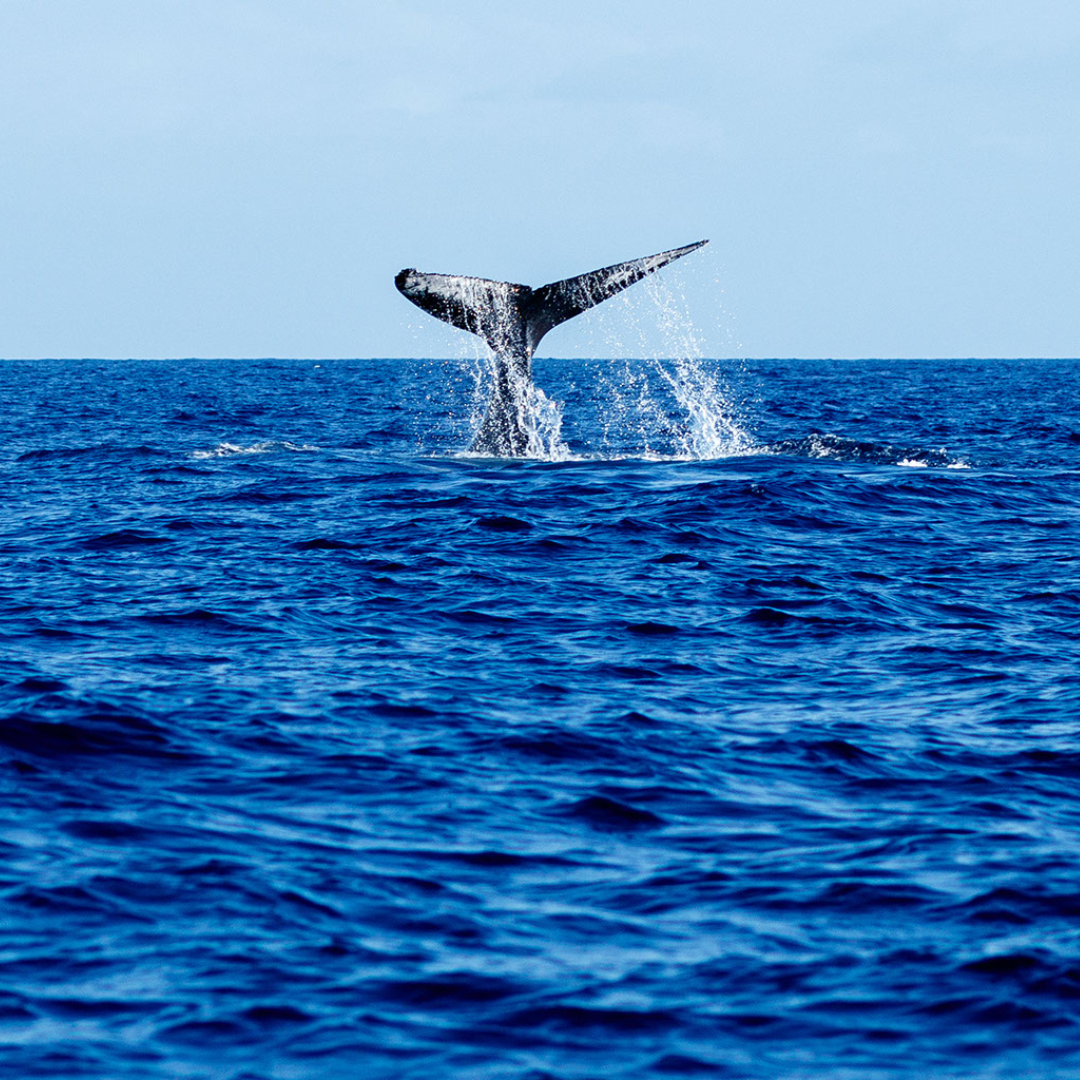
Spy Hop: Bringing their heads virtually out of the water and slowly moving their heads around, this is a way the whales will ‘SPY’ on what’s happening above the surface.
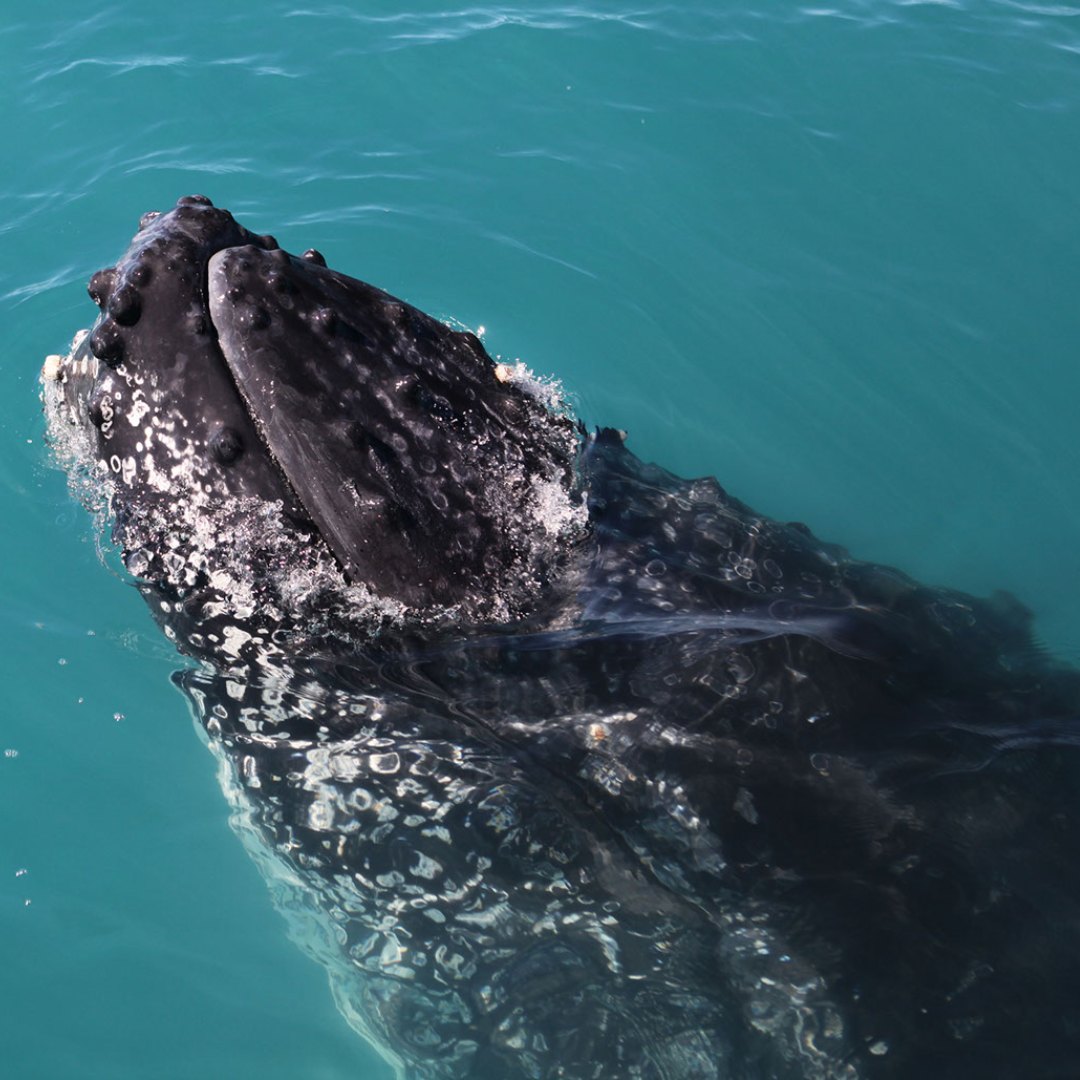
Head Slap or Lunge: This act is for play, communication, or dislodging parasites shown as the whale lunges its head out of the water and forwards.
Peduncle throw: A Humpback Whale throws the bottom half of its body (tail) upwards and sideways, out of the water, slapping down onto the surface using the peduncle (tail) muscle, a powerful and aggressive or defensive behaviour backed with lots of force. Between mothers and calves, peduncle throws are thought to be an act of discipline or warding off a calf’s potential predator.
Pectoral Slap: Laying on their side or back, Humpback Whales use their pectoral fins to slap the surface of the water, thought to predominantly be a flirting behaviour.
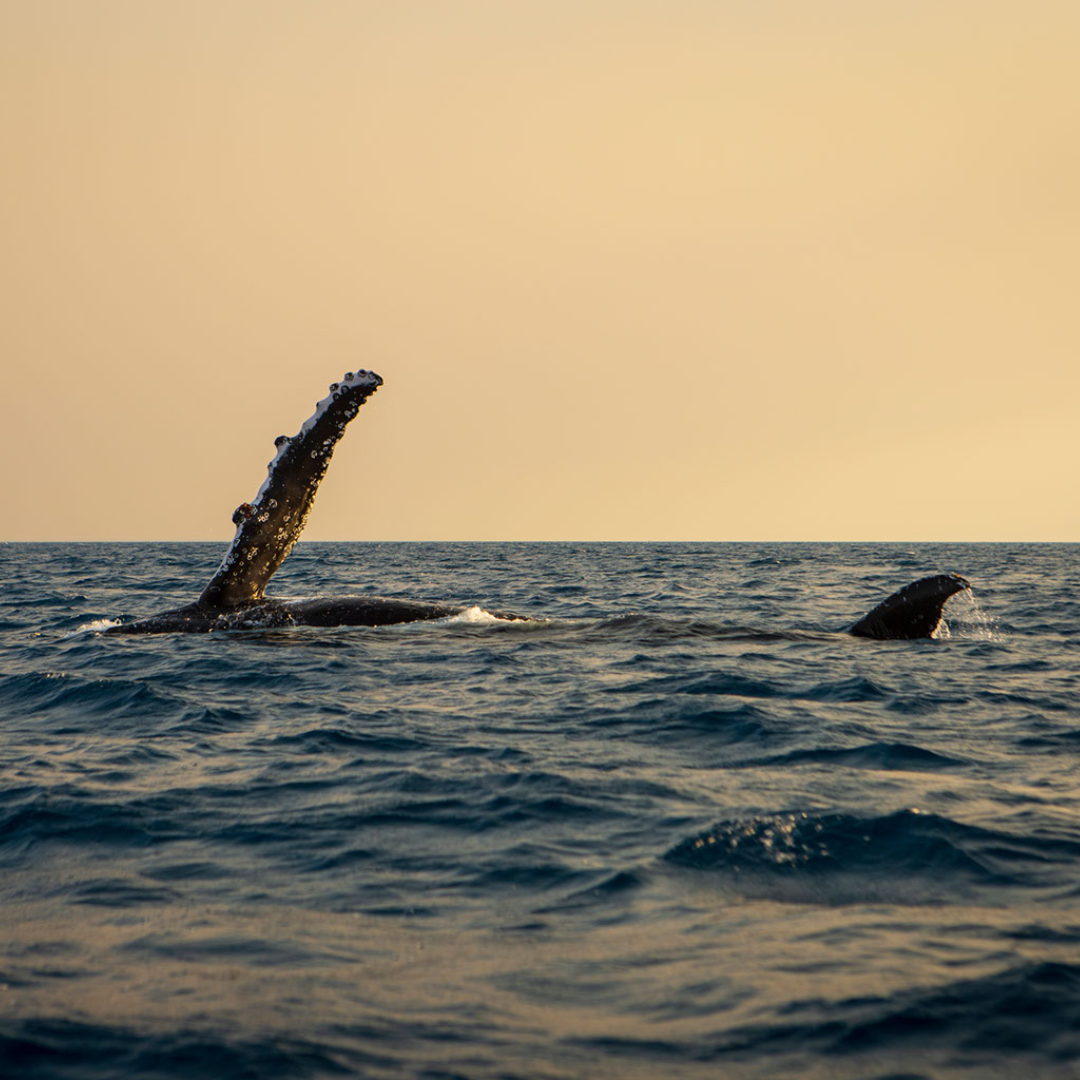
Fluke down (shallow) compared to a peduncle arch (deep): Both actions indicate a dive, however, one being a shallow dive and the other a deep dive, which when whale watching is important to note as this will indicate whether you will see the whale again in a few minutes or possibly 45 minutes later.
The ocean’s gentle giants are truly mesmerising and are a bucket-list encounter. The Whitsundays is one of the very few areas along the Great Barrier Reef where you can witness the survival of a species in the wild.
Some fun Humpback Whale facts:
There are two types of whales, and the main difference between them is the way they feed and what is inside their mouth:
- Baleen whales, such as Humpback Whales, have plates of whalebone. 270-400 baleen plates hang down from the upper jaw, looking like combs. The whales use these plates to sieve krill and plankton from seawater.
- Toothed whales, such as Orcas, have teeth and actively hunt prey such as fish, squid and other sea creatures like seals and sea birds.
- Humpback whales are Baleen Whales, with long pectoral fins almost 1/3 of their body length (3-5 m), being the reason for their genus name Megaptera (meaning big-winged).
- The Humpback Whale can be individually identified by the unique black and white markings on the underside of the tail flukes, which are like fingerprints, along with the bumps on the edges of the tail, with no two being the same.
- Humpback Whales can dive up to 200 m and be underwater on average for 45 minutes. Although while travelling, will conduct shallow dives and only be underwater for approximately 10-15 minutes between breaths.
- The mother’s milk is the consistency of toothpaste, and milk production can be up to 600 L per day! In the warm tropical waters, calves develop a protective blubber layer, increasing their weight 5-8 times their birth weight, allowing them to keep warm when they return to the cold southern waters of the Antarctic.
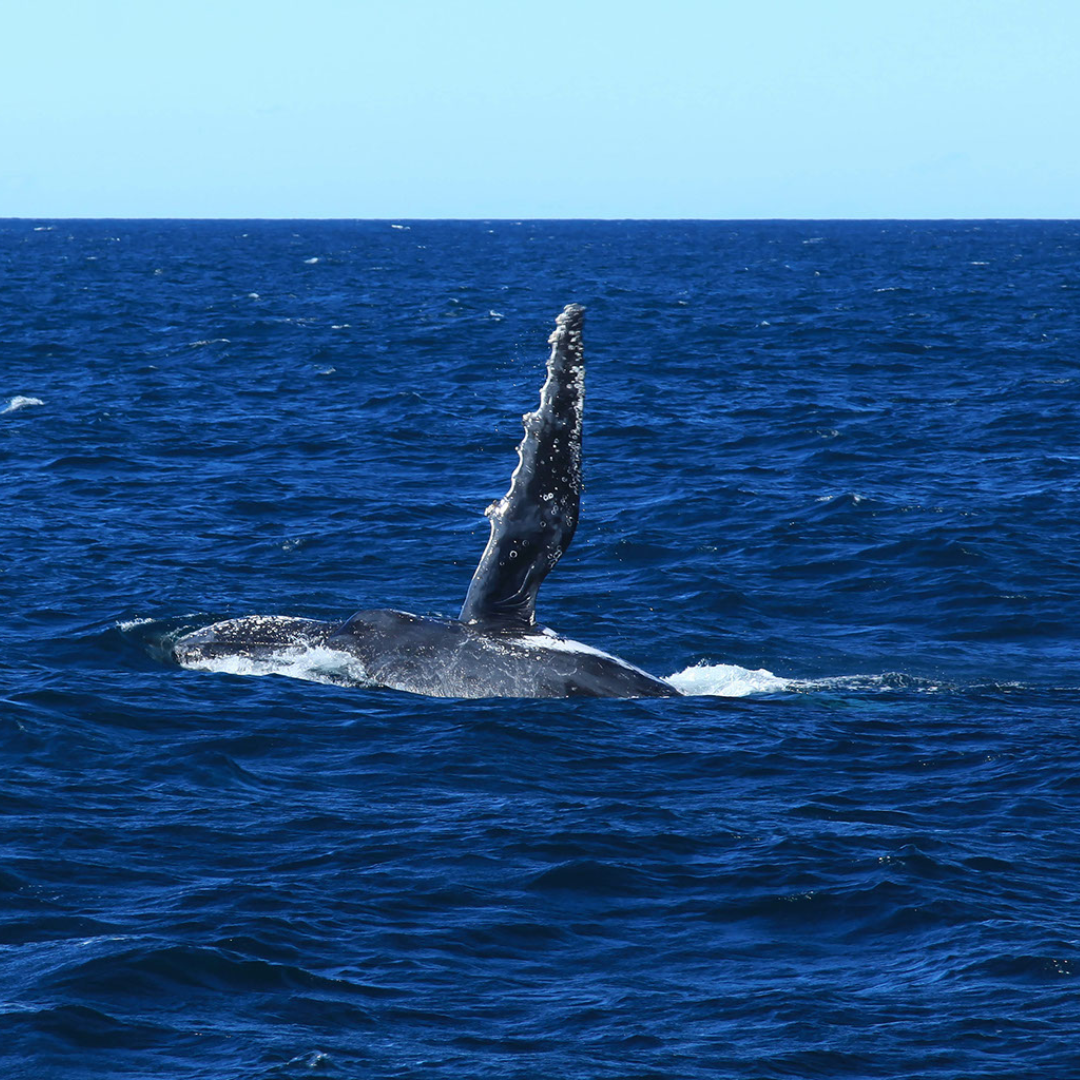
Other fun whale facts:
- The largest animal to have ever lived on earth is the Blue Whale. Weighing in at up to 190,000 kg and growing up to 33 m in length (3 school buses, twice as long as a T-Rex!) The heart of a Blue Whale is the size of a small car, and their babies (Calves) are born 7m long and weigh the same as an Elephant! Although the largest animal on earth, they prey on some of the smallest, eating up to 40 million krill per day during feeding season!
- The Sperm Whale got its name from the waxy substance called spermaceti which is in the head of the species. People once believed that this waxy substance was the sperm of the whale. However, it was later discovered to be one of the primary functions to amplify sonar clicks and help maintain the whale’s buoyancy.
- A way to tell the age of a Dwarf Minke Whale is by counting the waxy layers in their ears, located behind the eyes and look like tiny slits.
- The Dwarf Minke Whale is the second smallest of Baleen Whales growing to a maximum of just 8m, whilst the smallest Baleen Whale is the Pygmy Right Whale growing to a small 5-6 m in length.
- Whales breathe voluntarily, but how do they breathe when they are sleeping? Whales and Dolphins microsleep. This means half of their brain is active and the other half resting, ensuring they are alert enough to breathe and detect potential danger.